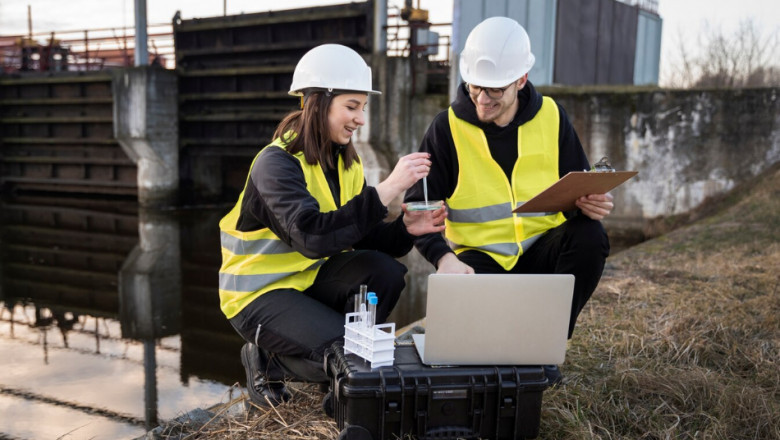views
Proper fuel tank installation is crucial for the smooth functioning of construction sites, ensuring an uninterrupted supply of diesel or gasoline for machinery and equipment. A well-installed fuel tank system enhances safety, compliance, and operational efficiency while minimizing environmental risks. Whether you're setting up a new construction site or upgrading an existing fuel system, following a structured, step-by-step guide ensures the installation is safe, legal, and long-lasting.
In this article, we’ll walk through a detailed, practical guide to construction fuel tank installation, focusing on industry best practices and compliance requirements.
Why Fuel Tank Installation Matters
Construction projects rely heavily on equipment like excavators, bulldozers, cranes, and generators. Downtime due to fuel shortages can delay progress and inflate costs. Installing a fuel tank on-site:
-
Reduces downtime by ensuring a constant fuel supply
-
Improves operational efficiency by eliminating trips to off-site fueling stations
-
Enhances safety and compliance with local environmental and fire safety regulations
-
Lowers fuel costs through bulk purchasing and storage
Types of Construction Fuel Tanks
Before diving into the installation process, it's important to understand the types of fuel tanks used on construction sites:
-
Above-Ground Storage Tanks (ASTs): Easy to install, inspect, and maintain. Ideal for short to medium-term construction projects.
-
Underground Storage Tanks (USTs): Suitable for long-term or permanent installations, though they require more stringent installation and monitoring.
-
Portable Fuel Tanks: Designed for mobility; used for smaller sites or short-duration jobs.
Each has its own installation requirements, but this guide primarily focuses on above-ground tanks, which are the most common in construction settings.
Step-by-Step Guide to Fuel Tank Installation
1. Site Assessment and Planning
Before selecting a location, perform a thorough site evaluation:
-
Accessibility: Ensure easy access for fuel delivery trucks and equipment.
-
Safety Clearances: Maintain minimum distances from buildings, roads, and property boundaries.
-
Ground Stability: The surface must support the tank's weight when full.
Consult local fire and environmental regulations to determine specific clearance and containment requirements.
2. Select the Right Fuel Tank
Choose a tank based on your project’s fuel usage, site duration, and environmental considerations. Consider:
-
Tank capacity
-
Material (steel or double-walled)
-
UL or API certifications
-
Built-in safety features like overfill protection, vents, and secondary containment
3. Prepare the Foundation
The tank must rest on a firm, level foundation to prevent tilting or shifting.
-
For ASTs, use a reinforced concrete pad or gravel bed
-
The base should be larger than the tank footprint
-
Install bollards or barriers around the area to protect against vehicle impacts
4. Install Containment Systems
A containment system helps capture spills or leaks:
-
Use a spill containment berm or secondary containment tray
-
Ensure containment capacity is at least 110% of the tank’s total volume
This step is vital for environmental compliance and safety.
5. Position and Secure the Tank
Once the base and containment are ready, carefully place the tank:
-
Use lifting equipment that complies with the tank’s specifications
-
Align the tank for easy access to fill ports and dispensing pumps
-
Secure the tank using anchor bolts or straps if required
6. Connect Fuel Lines and Fittings
Install all required piping, valves, and fittings:
-
Use flexible hoses or steel piping rated for fuel
-
Include shut-off valves, vent pipes, and filters
-
Properly seal all joints to prevent leaks
If using a dispensing system, install the fuel pump, nozzle, and meter as per manufacturer instructions.
7. Electrical and Safety Setup
For tanks with pumps or monitoring systems, ensure proper electrical connections:
-
Follow NFPA and local codes
-
Use explosion-proof or intrinsically safe components
-
Install grounding rods to prevent static discharge
Additionally, install fire extinguishers, warning signs, and emergency shut-off switches nearby.
8. Inspection and Testing
Before using the tank, conduct thorough testing:
-
Pressure test all lines and fittings for leaks
-
Inspect for structural stability and grounding
-
Ensure all components function as intended
Local authorities may require inspection before the system is approved for operation.
9. Documentation and Compliance
Keep records of:
-
Installation diagrams
-
Manufacturer specifications
-
Inspection and testing reports
-
Regulatory permits
These documents are essential for future audits and maintenance.
10. Regular Maintenance and Monitoring
Installation is only the beginning. Set up a schedule for:
-
Weekly inspections for leaks, rust, or damage
-
Monthly fuel quality tests
-
Annual maintenance of pumps, filters, and safety systems
Use a logbook or digital tracking system to record all inspections and services.
Summary
Construction fuel tank installation is a critical part of site setup that requires attention to detail, safety standards, and regulatory compliance. From choosing the right tank to final testing and documentation, each step plays a vital role in ensuring operational efficiency and environmental protection.
By following this step-by-step guide, construction managers and contractors can avoid common pitfalls, ensure smooth fueling operations, and stay compliant with local and national safety laws.














Comments
0 comment